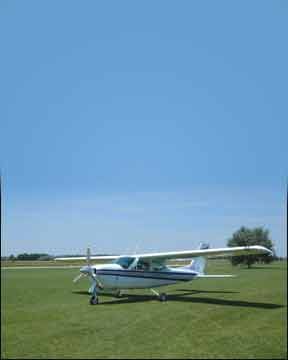At EAA Airventure in 2006, a mysterious airplane made a low flyby, arriving unannounced. It turned out to be the Cessna NGP, the now-tabled high-performance follow-on to the popular 210 that Cessna dropped from the line in 1986.
But at a glance, it was easy to mistake the airplane for something else: the Cessna 177 Cardinal RG. And many observers did. Although introduced 40 years ago, in 1971, the Cardinal RG remains one of the sleekest and most attractive highwing airplanes ever marketed. Despite its age, it retains a loyal following.
It’s easy to see why. The RG is one of the best compromises for its class in terms of speed, payload, cost of ownership and economy.
Among entry-level four-place retracts, it’s faster than all but the Mooney, roomier than all but the Beech Sierra and has better useful load than any of the others. It’s also hard to load out of CG.
But it hasn’t been a bed of roses for the Cardinal. The landing gear has been a major weak point, although owners point out that with good maintenance, the landing gear is no more problematic than any other aircraft. The fuel system also had early problems, which were fixed about halfway through the model life. And finding good maintenance is an issue. With a relatively small population, there are many more mechanics who claim to know the Cardinal RG than really do.
Cardinals—both fixed and retractable—have one more big advantage: an owner organization, Cardinal Flyers Online (CFO), that many say is the most active and supportive owner organization in general aviation.
History
The Cardinal RG is basically the same airframe as the fixed-gear Cardinal. This may not have been a favor to the RG, since the fixed-gear model, introduced in 1968, had a number of well-publicized problems that took a couple of years to sort out. The lack of power in the original FG Cardinal (150 HP) was fixed with an upgrade to 180 HP. Reduced stabilator authority in the flare was fixed with leading-edge slots in the control surface. The RG, however, started and stayed with a fuel injected 200-HP Lycoming IO-360 engine and had the leading-edge slots in the stabilator from the get-go.
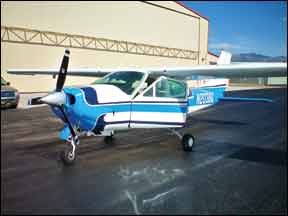
The larger engine gives the Cardinal RG a welcome boost in gross weight compared to the fixed-gear airplane (2800 vs. 2500 pounds). Although empty weights are higher, The net gain in useful load is about 100 pounds.
The competition in 200-HP four-seat retractables at the time of the Cardinal RG’s introduction in 1971 was fierce. Piper had been building its successful Arrow for four years, Mooney was we’ll established with various flavors of the M20 and Beech had just started selling the Sierra. It was a lucrative market segment, attracting buyers wanting a high-performance single but without the means to afford a more powerful airplane like the Debonair. Cessna didn’t help itself with a base price on the RG of $24,795—several thousand more than the Mooneys of the time.
The original fuel system was an unusual (for Cessna) design that had only on and off settings. This occasionally caused problems, since it’s possible for one tank to empty more quickly than the other. But ingenious Cardinal RG owners have found that this can be resolved in flight with a short but healthy sideslip. The tanks then feed equally for the remainder of the flight. The problem also occurs in later models with left-both-right-off fuel selectors, but here, the fix is simply to switch to the fuller tank for a few minutes.
There were several minor improvements to the Cardinal RG during its production run. The 1972 model gained a few knots in cruise and a slightly better climb rate thanks to a new prop. The gear system also gained some improvements, with mechanical switches moving to a more trouble-free magnetic setup. Both the hydraulic and electrical control systems changed, each step a small improvement. Also, the fixed cabin steps were dropped. They tended to expose the bottom of the fuselage to even more grief if the aircraft landed with the gear up. Instead, small foot pads were placed on the main gear struts.
In addition, landing and taxi lights were moved from the wing to the nose, a feature that many feel wasn’t an improvement because the higher vibration levels in the cowl shorten the life of cowl-mounted landing lights.
In 1973, the fuel capacity was raised from 50 gallons to 62 (60 gallons useful), improving the airplane’s flexibility and usefulness for instrument flight. Along with the bigger tanks came a more conventional left-both-right-off fuel selector. The doors sprouted latch pins to help hold them closed in flight and the cowl was streamlined.
Prior to 1976, the instrument panel was higher in front of the pilot than the right-seat passenger. This was nice for the passenger but limited panel space for added avionics. In 1976, the instrument panel was redesigned and enlarged and a simplified landing gear hydraulic system was offered. This gear configuration was maintained through the end of production except for the powerpack change in 1978. For the 1977 model, the aircraft received a fuel selector that gave it commonality with other Cessna singles, had a more positive detent and was supposed to be more easily maintainable. And finally, in 1978, the aircraft got a 28-volt electrical system and an improved gear retraction power pack that cut retraction time in half, to six seconds.
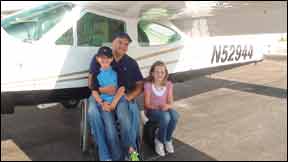
Production of the Cardinal RG ended after the 1978 model year, with 1366 aircraft built. Unlike many designs, the 177RG didn’t linger on with production trailing off to a trickle; about 100 airplanes were built that last year. However, in 1978, Cessna introduced the larger, more powerful Skylane RG and it’s likely the manufacturer didn’t want to wind up competing with itself. Interestingly, 177 Cardinals were also built in France under contract and these occasionally turn up in the U.S. These were internally corrosion proofed with zinc chromate.
Cabin
Cessnas are big favorites with passengers, for several reasons. The cabins are generally quite roomy and the high wing makes for a cool, shady ride as we’ll as a better view. The Cardinal adds to this with a wider cabin than the 172 or 182, low sill height and wide doors.
But those big doors—four feet wide—can be a problem on windy days. They’re fairly light and can fly right out of your hand if they get caught by a gust, causing damage to the hinge or the skin ahead of the door, or both. The doors also have proven to be leak-prone. Some of the doors fit too tightly, others too loosely, due to either poor quality control in production, subsequent wind damage or both.
Air leaks mean cold air, and some Cardinal owners report that the back seat gets pretty chilly despite Cessna’s attempts to warm things up with heater ducts. Careful sealing of potential air leaks in the cabin can bring some improvement, but a lap blanket for backseat passengers is useful when the ambient temperature falls below zero.
Many owners assume that if the door leaks air, it also leaks water. The windshield has also been implicated in water leaks. But water leaks, for the most part, seem to come from the fairing joint at the wing root and owners and mechanics have come up with a fix for this leak that owners can do easily. Still, many owners find a hand towel is a useful checklist item for IFR flight.
As noted earlier, visibility from the front seats is among the best in any Cessna. With the seats forward in flight position, the pilot sits about even with the wing’s leading edge. This allows a view around the wing during maneuvering. The seats themselves could be ordered with vertical height adjusters—a boon to both short and tall pilots.
At the other end of the cabin, the baggage compartment is, to put it mildly, oddly shaped. Cessna had to put the wheels somewhere and they wound up in the baggage bay. The usual Cessna cavern has a big hump in the middle of it, right next to the baggage door. This sounds worse that it is in practice. The baggage compartment holds a huge volume and Cardinal RG owners use the hump as a divider. The baggage door is wide, but what won’t fit through the baggage door will go in over the backseats.
One owner commented: “We had occasion to stuff the entire contents of a freshman girl’s dorm room into the baggage compartment one time. we’ll OK, her trunk had to go into the backseat, but everything else went into the baggage compartment. Try that in your Mooney.”
An interesting exercise is to try to load a Cardinal RG out of CG. It’s tough to do. You are more likely to go out the front end of the envelope than the back, especially with a heavy pilot and instructor and no baggage. In the Cardinal RG, at least, the 25 to 50 pounds of undefined “stuff” most of us leave in the baggage compartment becomes useful to counteract forward-CG problems.
Performance
Pilots say that the Cardinal RG makes for a good, stable instrument platform, but it’s still nimble. “Compared to a Skylane RG,” said one, “it’s like a sports car.” As noted above, the speed is good in its class, although not up to that of the Mooney. Owners report cruise of about 140 to 145 knots at 11 to 12 GPH, or about 135 knots at 9 to 10 GPH. The RG doesn’t get its speed from raw power, so proper rigging is important in obtaining book speeds.
Cessna’s flaps are among the biggest in the business and the Cardinal RG uses them to get respectable short-field performance for a four-place retractable. Landing distance over a 50-foot obstacle is a claimed 1220 feet, shortest in its class.
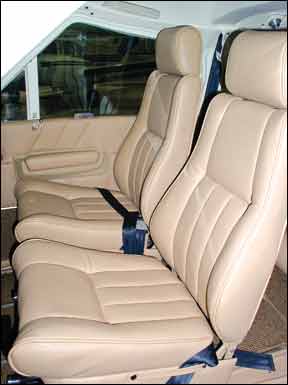
Despite the higher horsepower, the Cardinal RG’s takeoff performance (takeoff roll: 890 feet, and 1585 feet over an obstacle) falls short of the later fixed-gear Cardinals (750 feet and 1400 feet over the obstacle). While some of this is due to the higher gross weight, another factor is the large nosegear door that sits immediately behind the propeller when the gear is down. Cardinal RG pilots say they can tell if the nosegear is down without looking at the gear lights simply by the vibration the gear door induces. This vibration also means that the nosegear door hinge is an item to watch for wear.
Because all three gear legs retract aft, there is a noticeable pitch-trim change during both extension and retraction. On takeoff, experienced owners take advantage of this by letting the aircraft accelerate to the target climb speed and then retracting the gear. The change in CG brings the aircraft into climb attitude with almost no pilot input.
The pitch change during gear extension is easily canceled by lowering 10 degrees of flaps at the same time. In IMC, some pilots like to take advantage of the gear’s drag and pitch change by lowering it right at the outer marker. If you set up your speed carefully in advance, you will find that only slight power adjustments are necessary to maintain a stabilized descent on a 3-degree glideslope.
The stabilator in the Cardinal RG has been the subject of a lot of discussion. While it’s less sensitive than some other stabilator-equipped aircraft, it’s much more sensitive than the stabilizer/elevator combination that most Cessna pilots know and love. More than a few folks transitioning from the 172 or 182 to the Cardinal RG have embarrassed themselves by crow-hopping down the runway. A good checkout with careful attention to the special needs of the stabilator is a must, but once mastered it becomes a non-issue.
That Landing Gear
Through the eight years of its production, the Cardinal had four different landing gear systems, as Cessna strived to correct all its quirks. Major components remained the same but plumbing and controls evolved. The first, most problem-plagued one on the 1971 and 1972 Cardinal RGs, was a Rube Goldberg combination of electrical and hydraulic components. Its weakest links were electrically actuated main gear downlocks and mechanical position switches.
The 1973 Cardinals got magnetic position sensing switches which held up better to the elements, hydraulic downlock actuators that improved reliability and direct control of the gear movement through a hydraulic valve rather than an electric switch. By 1974, the hydraulic system was almost completely in control of the gear, although a complex electrical control system remained. There are many stories told about Cardinal gear issues, most of them inaccurate, but perhaps more than any other Cessna, the early Cardinal gear systems benefit from a mechanic with prior Cardinal knowledge.
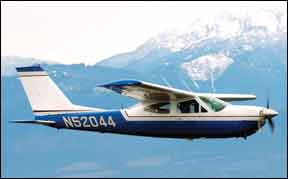
In 1976, Cessna finally got it right, removing all of the electrics from the gear system in favor of fully hydraulic gear using only two switches: a pressure switch to control the hydroelectric gear pump and a squat switch to keep the gear down while on the ground. While any of these gear systems are dependable if properly maintained, 1976 and later Cardinal owners are most likely to report a fully trouble-free ownership experience.
Finally, with the 1978 models, the 12-volt Prestolite hydraulic power packs were eliminated in favor of a 24-volt power pack of Cessna’s design. This has proved to be the most satisfactory of all the gear systems and, of course, would be the one to choose if cost considerations and availability permit—only 100 RGs were built in 1978.
There are other landing gear issues too, not related to the hydraulics. The most serious is the main gear actuating cylinder rod ends, which had a nasty habit of breaking off at inopportune moments, rendering the main gear inoperative. Actually, the main gear dropped to in-trail position and for a while, there was talk about carrying boathooks to reach down and pull it into the locks. But replacing the rod ends is a more permanent solution. Have your mechanic check for grease zerk fittings on the rod ends. If they are there, you have the old rod ends.
At any rate, buyers should check to see which, if any, of Cessna’s recommended service instructions have been applied to the model being considered. There are at least eight of them, including numbers 71-41, 72-26, 73-28, 74-26, 75-25, 76-4, 76-7 and 77-20.
The landing gear raises the issue of proper maintenance. Experienced Cardinal RG owners will tell you that properly maintained, the landing gear is every bit as reliable as the gear on any other aircraft. The problem is finding a mechanic who really understands the landing gear, as we’ll as the rest of the airplane. Proper rigging of the gear is set forth in great detail in the maintenance manual and careful adherence to these procedures usually results in a reliable landing gear system. This is where the owner organization proves its worth, with a lot of useful and detailed advice as we’ll as referrals to knowledgeable Cardinal mechanics.
Other Maintenance Issues
The Lycoming IO-360-A1B6D engine in the 1973 to 1978 Cardinal RGs has a couple of notable idiosyncrasies. One is that it uses the infamous Bendix dual magneto that puts two magnetos on a single shaft, making the shaft a potential single-point failure item that can rob you of all engine power instantly if it fails.
The Cardinal RG is not the only aircraft using a dual-magneto engine—some Mooney models and Beech Duchess models do also. The 1971 Cardinal RG used the IO-360-A1B6 engine, with separate magnetos. This engine is approved for all Cardinal RGs, but getting an exchange at overhaul time can be costly. The dual-magneto engines were recently a subject of Special Airworthiness Information Bulletin NE-06-08, which alerted owners and mechanics to a prop governor hazard that “could result in loss of engine oil leading to engine failure.”
Not only could it, it has. The oil loss results from omission of a plate between the prop governor drive pad and the prop governor itself. The plate is between two gaskets and is often thrown away with the gaskets when the old governor is removed. Unfortunately, the gasket without the plate often takes 15 minutes or so to fail, setting up the pilot for an off-airport landing.
Owner Organizations
One of the biggest selling points for all Cardinals is Cardinal Flyers Online (CFO). This model-specific organization with over 2000 members maintains a large and complete Website (www.cardinalflyers.com) that is a treasure trove of data and advice on Cardinals. Much has been contributed by members, but the operators of the site, Keith Peterson and Paul Millner, have become experts in every detail of Cardinals. CFO was the first organization to call attention to the prop governor plate problem and was instrumental in getting the recent SAIB published. Most of the fixes or techniques noted in this article have been documented on the CFO website.
In addition to the Website, CFO sends out an almost daily email digest containing messages from members, replies from other members and comments from both Millner and Peterson. Past digests are maintained on the site, with a search facility that lets you search all the digests from the most recent (#4063 at this writing) to the earliest digest in March 1997. Membership in CFO is $34 a year. Many owners find that the Cessna Pilots Association (www.cessna.org) is also a good source of assistance. Contact www.cessna.org or 805-934-0493.
Mods
Because it attracts somewhat of a cult following, the Cardinal has also attracted quite a few modifications over the years, with some shops specializing in the type. You can turn the airplane into a fast flight level flyer with a turbonormalizing system from Tornado Alley Turbo at www.taturbo.com or 888-359-4264. Speed modifications of various kinds are available from several sources, including wing tip mods and fairings for the exhaust pipe. Contact www.aircraftspeedmods.ca or 204-728-7618 for more information. LoPresti Speed Merchants are finishing up a new cowling product for the Cardinal. Contact www.speedmods.com. Vortex generators are available for the Cardinal from Micro Aerodynamics at www.microaero.com or 800-677-2370. Owners report good results with these mods. Horton makes a STOL kit. Contact Horton at www.airsport.com.
Hartzell and McCauley continue to offer three-blade prop conversions. Contact www.hartztellprop.com or 937-778-4376. Find McCauley at www.mccauley.textron.com or 800-621-7767.
Owner Comments
My father, twin brother and I own a 1978 177RG II that we purchased the aircraft in December 2010. We did some research and between a Mooney 201, Piper Arrow and a Cardinal, the Cardinal came out on top.
Maintenance and insurance costs seem to be on par for this class of airplane. Other than having to top off the oil to six quarts every couple of hours, the only two maintenance issues we’ve had with our Cardinal are a broken nosegear door hinge and a leaking brake line swivel fitting. We haven’t been the only ones having to deal with the leaky swivel fitting, although some have never had an issue.
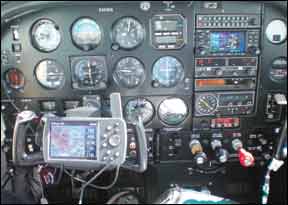
After consulting with fellow Cardinal flyers, we learned that despite being somewhat difficult to get to, it isn’t too difficult to fix. Insurance is in the ballpark of what you would expect for a single-engine retract. With three pilots on the policy, all instrument and commercial rated, the premium is around $1600. It could be lower, but my brother and I, despite holding advanced ratings, had very little complex time prior to buying the Cardinal.
In our 1978 model, Cessna fixed two things: one was the stabilator, with slots just behind the leading edge to give much better takeoff, slow flight and stall characteristics. Another was the electrical system. The 1978 models have the 28-volt system, while older models had the 12-volt system. The 12-volt models take roughly 12 seconds to cycle the landing gear, while the 28-volt models take half that. The later models also have the full-size instrument panel on the co-pilot’s side.
Flying our Cardinal has exceeded our expectations. It is a perfect mix of speed, payload, fuel efficiency and passenger comfort. Averaging 10 GPH, airspeeds of 135 to 145 knots are the norm. We have yet to master getting our bird down to pattern altitude from cruise without hearing the gear warning horn. This airplane likes to go fast.
Our best resource for owning our Cardinal by far has been the Cardinal Flyers Online organization. It has a wealth of information on our beloved birds, from maintenance and flying tips, to paint schemes and hangar talk. They also organize regional and national fly-ins. If we’ve had a question about our RG, someone on that site knew the answer, or would point us in the right direction, to find it.
Seth Martin
Palmyra, Pennsylvania
My aging father could no longer manage the climb-and-fold maneuvering it took to get aboard my Twin Comanche. After I sold that superb airplane, I was looking for a comfortable, high-wing four-seat single with comparable cruise performance that would be easy to get in and out of. A Cessna Cardinal RG with the Turbo STC fit the bill.
With the help of other pilots at Cardinal Flyers who clued me in on who was selling their airplanes, I found a 1974 model with good paint and fair interior, no corrosion, a mid-time first-run factory engine, the turbo STC and, to my surprise, an STEC 60-2 autopilot.
In my excitement, I bought the airplane without a thorough pre-purchase inspection. Big mistake! There were numerous serious issues with the landing gear that required the replacement of the nosegear trunnion, nosewheel, nosegear fuselage attachment points, gear pump and motor, nosegear reed switches, realigning the engine/nosegear mount and installing new tires all around. The previous owner clearly had challenges with landing the airplane and had I done a gear swing in the shop, most of the issues would have been easily revealed. Had I been aware of the damage, I would have been more strident in my price negotiation.
Three years later, I am a happy owner. In addition to the aforementioned gear repairs, I’ve had the smoking rivets on the wing spar taken care of (at Tennessee Aircraft, where Paul New has an approved repair shop for Cardinals and Centurions) and complied with a Tornado Alley SB to increase the fuel flow through the fuel servo that addresses a tendency toward detonation at high power settings. Useful additions to date are a Garmin 430W, STEC GPSS module, Garmin 327 transponder and a Navworx ADS-B transceiver, which displays traffic on the 430W and on the 496 mounted on the yoke. The tachometer is now an electronic UMA unit and the fuel computer is a new Shadin.
The Cardinal handles great. Roll and pitch forces load up linearly and, while not as beautifully weighted and responsive as a Twin Comanche or a Bonanza, hand flying a Cardinal is a delight.
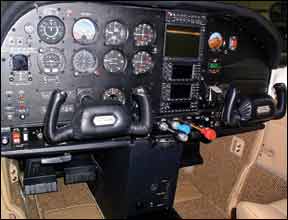
Payload is good for a 200-HP four banger. Weight and balance work out fine for two American-sized adults and two teenage kids, or three American-sized adults. Be careful that if only two American-sized adults are in the front seats, CG is likely to be too far forward, which will affect climb rate and speed.
Range is OK. I have flown non-stop 750-800 miles. This takes aggressive LOP operations and high altitude to achieve. Another 20 gallons would be a big improvement.
For me, the Turbo Cardinal RG offers a nice compromise between comfort and speed. It is not quite as fast as a Mooney 231/252 or Twin Comanche, but 165 knots true is plenty fast when you’re sitting comfortably in a wide and tall cabin as the world passes by below. And it’s nice to know that with its large doors when on the ground, you don’t need to be a wing-walking contortionist to get to and from your seat.
Brian Williams
Via e-mail
My airplane is a 1977 Cardinal RG, and I bought her in January of 2007 after renting Cardinals from a local FBO. I fell in love with the way they handle on my first flight and eventually had to buy one of my own.
The feel of the controls is light, authoritative and nicely harmonized. The IO-360 engine delivers satisfying acceleration, climb and cruise, and there are several STCs available to improve the book performance figures, including the IO-390 upgrade, the Tornado Alley turbo normalizer and the Firewall Forward high-compression pistons.
I usually cruise at or below 12,500 feet and typically see indicated airspeeds in the 140- to 145-knot range at 9 to 10 GPH. The visibility out the windshield and the side windows is unusually good for a high-wing aircraft, since the wing is so far back and there are no struts or gear (during cruise) to get in the way.
I belong to the Cardinal Flyers Online organization, which is a fantastic resource for any person who flies or owns a Cardinal. I also belong to the Cessna Pilots Association and the Cessna Owners Association, which are also good resources.
John Peck
Everett, Washington
I own and fly a 1971 Cessna Cardinal RG, which I purchased as a worn-out plane, with the intention of going through everything. I had 100 percent of the problems listed on the exceptionally helpful Cardinal Flyers Online website. The CFO website really makes owning an older Cardinal an easy experience.
My aircraft now meets book speeds and performance numbers, which is to say it performs as expected. It’s no hot rod and it won’t match speeds with a similar HP Mooney in climb or cruise. However, it is far more roomy for both people and cargo. I find that 100 pounds under gross weight is a practical limit here in hot and humid South Florida. A Cardinal RG is a true three-adults-plus-bags aircraft. My aircraft has a 1017-pound useful load. With 53 gallons full fuel, I can carry 699 pounds of people and gear.
I generally cruise at 140 to 143 knots true, full throttle, 2500 RPM, 7500 to 9500 feet on 8.5 to 9.5 GPH. I don’t fly lean of peak at 8500 feet cruise altitude, mostly because there really is not enough reserve HP to do so. I adjust the mixture for real world best power. Interestingly enough, at low altitude, slower speed cruise, the aircraft is capable of some incredibly low fuel burns. So, the 50-mile trip to the airport restaurant can be an inexpensive flight. I’ve seen as low as 5 GPH, 105 knots true at 2000 feet.
Parts availability has been absolutely no problem, but Cessna does charge more than expected for certain items. Maintenance is generally easy, but it is time consuming due to the expected complexity. The gear system is generally trouble free if the hoses are new, and the actuator rod end SB has been complied with.
Conclusion: I really love my Cardinal RG. It’s responsive, fun to fly, quite capable, fast and economical.
Christopher G. Cuneo
Linda Vista Aviation
The Cardinal RG is one of the best multifunctional aircraft I have ever owned. It can carry four people comfortably with some luggage and full fuel to considerable distance.
It has plenty of space, it’s an aircraft easy to get in and out of, very good speed, excellent endurance, under 10 GPH fuel consumption and it has the best looks amongst all the Cessna products of its time.
I have flown it across the Atlantic from Canada to Hungary, where it’s registered now, and since then I have been to most European countries, all through the Mediterranean Islands, down to North Africa and it has never let me down.
Paul Tonelli
Via e-mail

